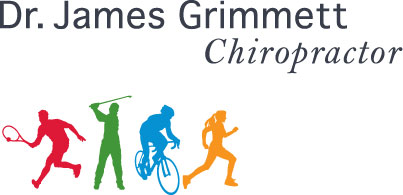Gym workouts, neuroplasticity (May 2018 Blog) and good posture can happen together. Now this might not seem newsworthy at first but I invite you to read on. Who goes to the gym with the goal to promote poor posture. The reality is, this is what is happening more common than not. In the Western world poor posture is more the norm than the exception.
If one has anterior head carriage and forward shoulder rounding other less obvious postural faults are usually present too. This might include a slight scoliosis, knocked knees, flat feet, and or an hourglass waist (associated with a weak abdominal wall).
When working out, be it cardio, calisthenics, or with added resistance such as weights one’s poor posture is typically worsened during the exercise. It is common to think that if there is postural or core weakness one just needs to add weights to improve this. When weak core or posture is loaded up without focusing on correct technique, the postural fault is magnified. This might be the chin-up or the bicep curl where the head juts forward, especially to get that last rep out.
If it’s a cardio workout on the bike, elliptical or stair master the all too common slouch is assumed. And when fatigue sets in, again the core weakness expressed in the poor posture is heightened, not improved. That is, the slouch gets worse.
Postural faults can also be observed with calisthenics such as the plank, squat, sit up, push up, lunges… When I see these being done in the gym or boot camp again poor technique is more the norm. A good example is the plank where numerous postural faults are observed during the body lift and hold. And these faults become more noticeable the longer the hold is maintained.
Just doing an exercise does not ensure the intended outcome. So the ‘just do it’ slogan would be more complete should it include ‘with a road map’ on technique. As simple as some exercises may seem most people need to improve their technique. That is, to help ensure enough of the proper pattern for strengthening the core and improving one’s posture is the outcome.
It’s common to think I’ll strengthen my buttocks with this exercise or get a ‘ripped’ abdomen with this crunch exercise. The usual result from this isolated approach is further dysfunction and eventual injury. It’s a good example of where more is not necessarily better.
The message is not to be frightened by this article but to engage more focus on the weak links. Why not, think I have a jug of water on my head when doing any exercise. The focus should be not to spill this jug of water and to push up into the jug getting tall at the same time. This heightened mental awareness of good posture, especially when the body is challenged is a great example of neuroplasticity.
Yes, yes, yes, poor posture can be improved. On the cardio machine take a moment when starting to think: can I comfortably be taller? Intermittently cue in. Use a mirror to help check your posture to see if you are escaping from where you started. If so, correct for this. My suggestion is to start easy by putting 5-10 second corrections intermittently into the cardio work out.
For resistance training again think tall with the jug of water on the head. To keep it simple it’s the same principal for all exercises. Even when lying on the floor one should be thinking tall. The plank for instance is likely better performed if you adopt the normal baby roll. The plank being a snap shot of a portion of this roll. The baby’s spine is nicely lengthened in the roll which is a key movement pattern in getting the baby to be eventually upright.
Be aware that the same workout with improved posture can be physically and mentally exhausting. You may need to initially reduce the length of the workout due to the added effort.
This may seem intimidating at first but rewards come quickly. Feeling ‘taller’ or ‘lighter’ immediately post workout is commonly expressed. Why not make better posture your 2020 New Year’s resolution?
